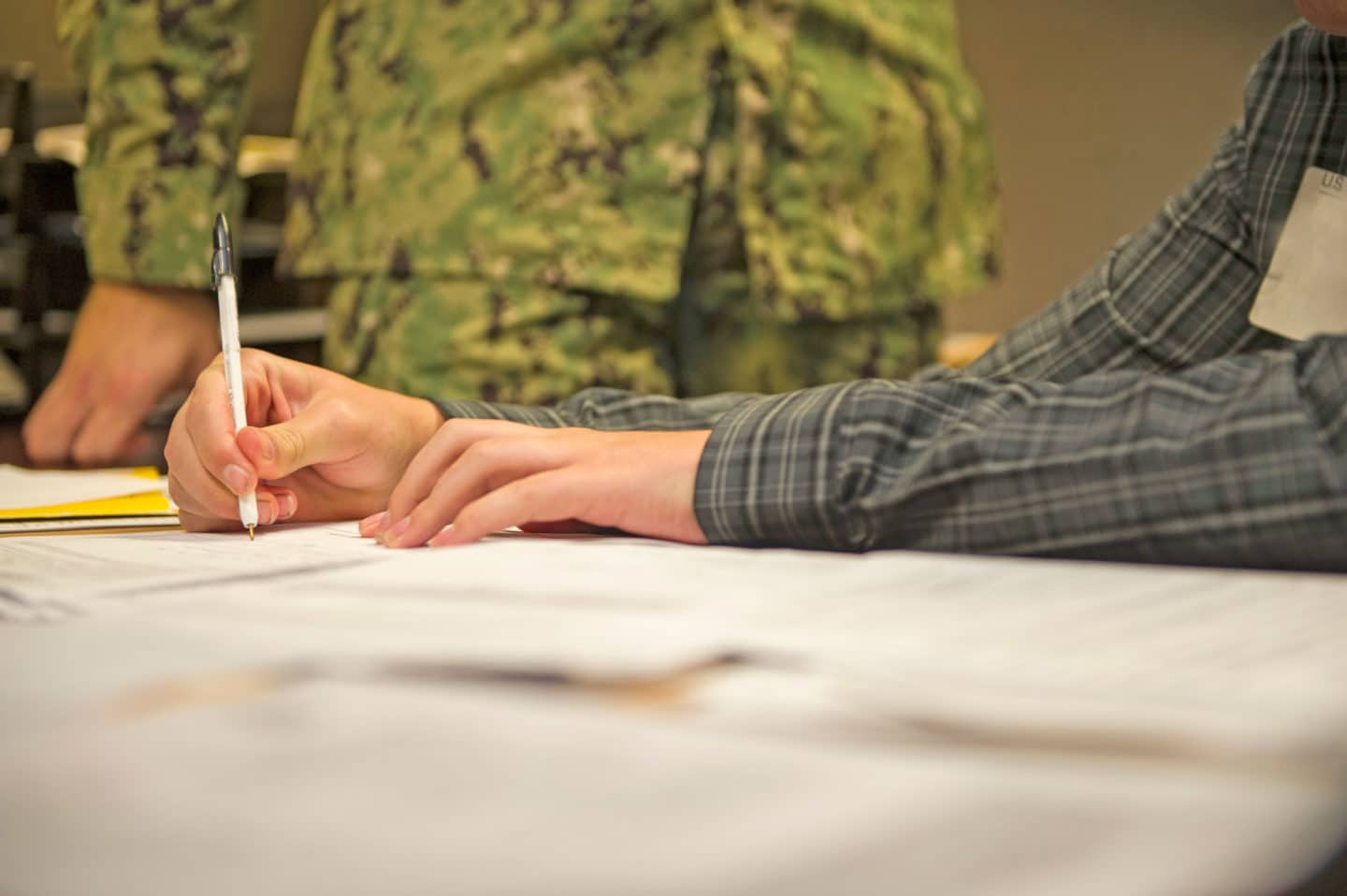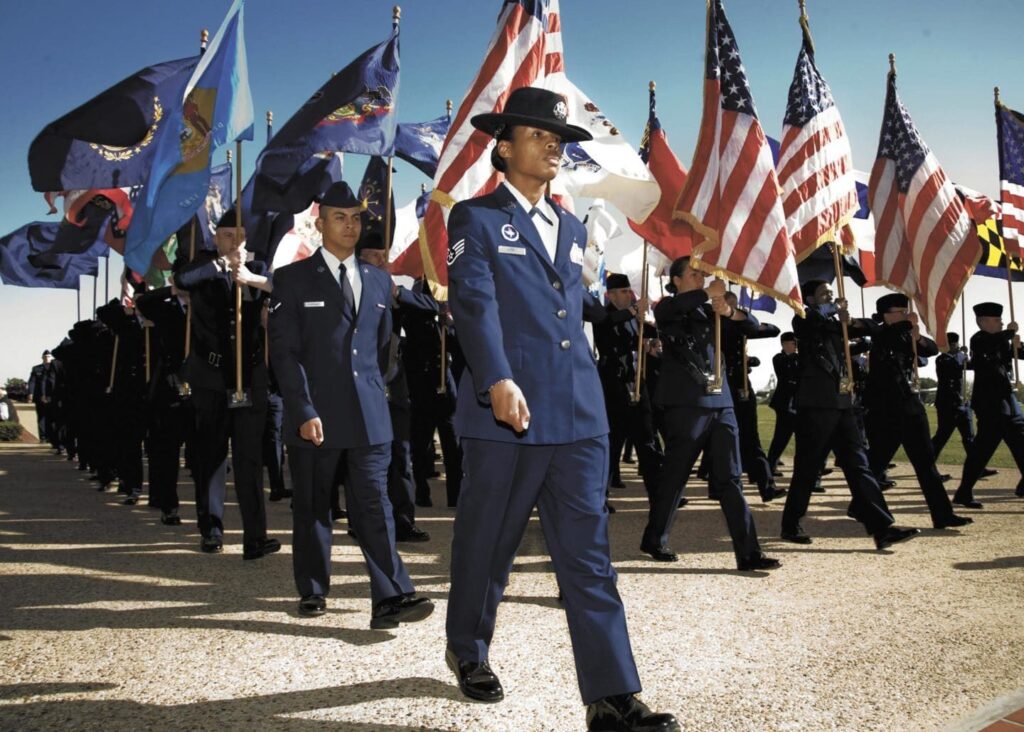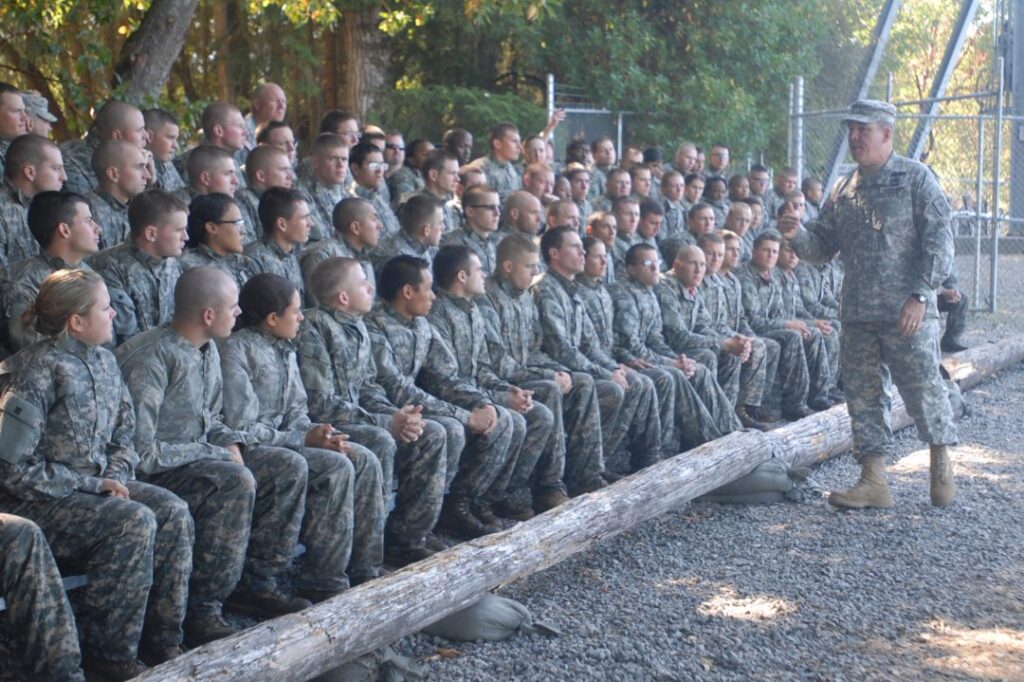
- The App
- Sandboxx News
- Resources
Learn
- Company
About
Become a Partner
Support
- The App
- Sandboxx News
- Resources
Learn
- Company
About
Become a Partner
Support
What is the ASVAB? Armed Services Vocational Aptitude Battery (ASVAB) – a test every service member must take before joining any branch of the military....

Armed Services Vocational Aptitude Battery (ASVAB) – a test every service member must take before joining any branch of the military. The ASVAB is a timed, multiple-choice test developed by the Department of Defense and used to determine not only if you are qualified to enlist, but what Military Occupational Specialty (MOS) you qualify for as well.
Typically, the ASVAB is administered in a computerized format at a Military Entrance Processing Station (MEPS) or at a satellite location called a Military Entrance Test (MET) site.
The ASVAB test is designed to measure aptitudes in four domains: Verbal, Math, Science and Technical, and Spatial. The table below describes the content of the ASVAB tests and presented in that order:
| Test Section | Description | Domain | Number of Questions | Time (minutes) |
| General Science (GS) | Knowledge of physical and biological sciences | Science / Technical | 16 | 8 |
| Arithmetic Reasoning (AR) | Arithmetic Reasoning (AR) | Math | 16 | 39 |
| Word Knowledge (WK) | Ability to select the correct meaning of a word presented in context and to identify best synonym for a given word | Verbal | 16 | 8 |
| Paragraph Comprehension (PC) | Ability to obtain information from written passages | Verbal | 11 | 22 |
| Mathematics Knowledge (MK) | Knowledge of high school mathematics principles | Math | 16 | 20 |
| Electronics Information (EI) | Knowledge of electricity and electronics | Science / Technical | 16 | 8 |
| Auto Information (AI) | Knowledge of automobile technology | Science / Technical | 11 | 7 |
| Shop Information (SI) | Knowledge of tools and shops terminology and practices | Science / Technical | 11 | 6 |
| Mechanical Comprehension (MC) | Knowledge of mechanical and physical principles | Science / Technical | 16 | 20 |
| Assembling Objects (AO) | Ability to determine how an object will look when its parts are put together | Spatial | 16 | 16 |
| 145 | 154 |
Aside from raw ASVAB test scores, the Armed Forces Qualification Test (AFQT) score is used to determine basic qualification for enlistment and provides an indication of how each person performed compared with the base population. Meaning, someone who receives an AFQT score of 55, scored better than 55 percent of all other members of the base population. The highest possible percentile is 99.
The way it is calculated: AR + MK + (2 x VE). The VE (verbal) score is determined by adding the raw scores from the PC and WK.
The minimum score for enlistment varies according to branch of service and whether the enlistee has a high school diploma. Eligibility is not determined by score alone. Certain recruiting goal practices may require an applicant to achieve a higher score than the required minimum AFQT score in order to be considered for enlistment. Rules and regulations are subject to change and future recruits should call their recruiter for up to date qualification information.
Law prohibits applicants scoring in Category V from enlisting. In addition, there are constraints placed on Category IV recruits, whereas they must be high school graduates, and cannot be denied enlistment solely on these criteria if the recruit is needed to satisfy established strength requirements.
| Army Minimum ASVAB Score | 31 |
|---|
Army ASVAB and Education Requirements: Recruits must score at least 31 on the AFQT.
To qualify for certain enlistment incentives, such as enlistment bonuses, an Army recruit must score a minimum of 50. The Army allows more recruits to enlist with a GED than any other branch – even offering a special program called Army Prep School that allows individuals to enlist who have no high school diploma or GED. In addition, the Army also offers a higher enlistment rank for recruits with college experience – up to the rank of E-4 (Specialist) for those with a bachelor’s degree.
| Marine Corps Minimum ASVAB Score | 32 |
|---|
Marine Corps ASVAB and Education Requirements: Recruits must score at least 32 on the AFQT.
Very few exceptions are made (about one percent) for some otherwise qualified recruits (exceptionally qualified, that is) with scores as low as 25. Those without a high school education are generally ineligible. The Marine Corps limits GED enlistments to no more than five percent per year. Those with a GED must score a minimum of 50 on the AFQT to even be considered. The Marine Corps offers advanced enlistment rank for college credits. However, the Marines are the most restrictive of all of the branches in this area. The maximum advanced rank for college credits is E-2.
| Navy Minimum ASVAB Score | 35 |
|---|
Navy ASVAB and Education Requirements: Recruits must score at least 35 on the AFQT.
Reserve enlistment programs only require a score of 31. Moreover, the Navy accepts few recruits who don’t have a high school diploma. To be considered for enlistment with a GED in the Navy, you must score a minimum of 50 on the AFQT; no drug use on your record; at least three references from influential members of the community; no police involvement or any other than minor traffic offenses as a GED applicant. Lastly, the Navy offers advanced enlistment rank (up to E-3) for college experience.
| Air Force Minimum ASVAB Score | 36 |
|---|
Air Force ASVAB and Education Requirements: Recruits must score at least 36 on the AFQT.
Exceptions may be made for a handful of high school graduates who can score as low as 31. The vast majority – some 70 percent achieve a score of 50 or above. Your chances of joining the Air Force without graduating from high school are slim. Even with a GED, the chances are not good. Only about half of one percent of all Air Force enlistments each year are GED-holders. To even be considered for one of these very few slots, a GED-holder must score a minimum of 65 on the AFQT. Like other branches of service, the Air Force offers a higher enlistment rank for recruits with college credit.
Prepping and passing the ASVAB are the first steps in pursuing a career in the military. Finally, once you’ve passed the ASVAB and gone to MEPs the next step will be preparing for basic training. Begin to learn everything you need to know before you ship to basic training with our helpful tips.
Army basic training
Marine Corps boot camp
Navy boot camp
Air Force basic training
Coast Guard boot camp




